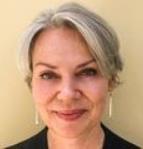Image

Helen Snyder
PhD
Dr Snyder received her PhD in immunology from the University of Cambridge, UK and trained as a postdoctoral fellow at Scripps Research Institute, La Jolla, California. Dr. Snyder has over 30 years' experience in immunology research, reagent development, preclinical development of biotherapeutics, and business development of immunoassay and immunodiagnostic products. She has held positions as Associate Professor at the University of California, San Diego, as well as Director of Immunology at Dynavax Technologies and key business development roles at both Solulink Biosciences and Cell IDx. Dr Snyder has over 40 papers and reviews in the areas of immune regulation and vaccine development.